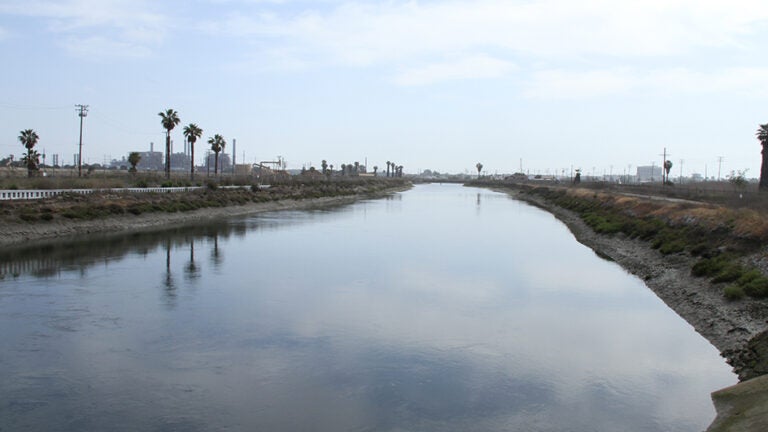
Marshes on the Margin: Los Cerritos Wetlands
What does an urban marsh look like? On June 4, we toured the Los Cerritos Wetlands in Long Beach to find out. Driving down Pacific Coast Highway the wetlands are often mistaken as old oil fields. But that is just one part of the story. Local steward Eric Zahn of Tidal Influence led our tour and we learned more about the history and hopes for the future of this area. There have been many conservation and restoration efforts of the Los Cerritos Wetlands, but the ‘urban’ part of the wetlands is very apparent with sections of chain link fences, roads, palm trees, oil wells, and the San Gabriel river enclosed in a concrete river bed. It is clear that decades of development, habitat fragmentation, invasive species, and pollution, including contaminated soil, have taken its toll. How will rising sea levels impact these remaining wetlands? Will they be resilient?
It can be difficult to see the beauty and value of this wetland through the barbed wire fences and oil fields. But piece-by-piece, nature reveals herself with the call of seabird, tidal channels, and sea anemones living along the concrete river. Once part of 2400 acres, there are now about 500 acres left of these saltwater marshlands that are restorable. It is still a highly valuable habitat for both migratory and resident birds, including the California Least Tern, and we are here today to start building a case study for the Marshes on the Margins project.
Marshes on the Margins: Developing Tidal Wetlands Adaptation Strategies in Southern California is a project of the NOAA National Centers for Coastal Ocean Science, funded by a NOAA Ecological Effects of Sea Level Rise grant. The project seeks to understand how estuaries, like Los Cerritos Wetlands, will change with sea level rise, and then work to develop natural and nature-based solutions, and promote collaborative networks to understand tradeoffs between management strategies.
USC Sea Grant, in partnership with the Tijuana River National Estuary Research Reserve and the State Coastal Conservancy, organized the June 4th tour and subsequent workshop. The main goal of the workshop was to communicate between Los Cerritos stakeholders and the Marshes on the Margins project team members, and to develop a shared understanding of the area to leverage efforts as the project advances. As the multi-year project continues, USC Sea Grant looks forward to continuing to bring scientists and resource managers together to promote science-informed decision-making.










